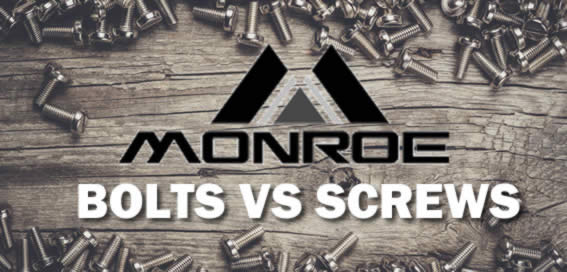
It’s a common assumption that bolts and screws refer to the same fastening hardware. But while they look similar — and have similar characteristics — they are two unique fasteners with their own unique applications. So, what’s the difference between bolts and screws?
The Machinery’s Handbook explains that bolts are used to assemble to unthreaded objects, typically with the use of a nut. In comparison, screws are used to assemble objects with threads. Here’s the thing, though: not all objects in which screws are used already have threads. Some objects feature pre-made threads, whereas others create the thread during the installation of the screw. So, the fundamental difference between screws and bolts is that the former is used to assemble threaded objects, while the latter is used to assemble untreaded objects. With that said, screws can make their own threads during the installation process.
It’s also worth noting that screws must be turned to assemble a joint, while bolts can be secured in place using a tool or a carriage bolt. Bolts are typically used to make a bolted joint by using a nut to apply force while using the shank to act as a dowel. This essentially pins the joint against sideways forces. And because of this, many bolts have an unthreaded shank (known as a grip length); thus, making them more effective for dowels.
There are dozens of different types of bolts, some of which include anchor bolts, arbor bolts, elevator bolts, hanger bolts, hex bolts, J bolts, lag bolts, rock bolts, shoulder bolts and U bolts. Additionally, bolts are available in a wide range of materials, including steel, stainless steel, bronze, brass and nylon. Statistics show, however, that up to 90% of all bolts are made of steel, making it the preferred choice among manufacturing companies.
There are also dozens of different types of screws, some of which include chipboard screws, particle board screws, deck screws, drive screws, hammer drive screws, drywall screws, eye screws, dowel screws, wood screws, twinfast screws, security head screws and sheet metal screws. Some of the different head shapes in which screws are available include pan, button, round, muschroom, oval, bulge, cheese, fillister and flanged. And like their bolt counterparts, screws are available in a range of materials.
After reading this, you should have a better understanding of the difference between screws and bolts.
Are you looking for Fasteners?
Submit an RFQ now!
